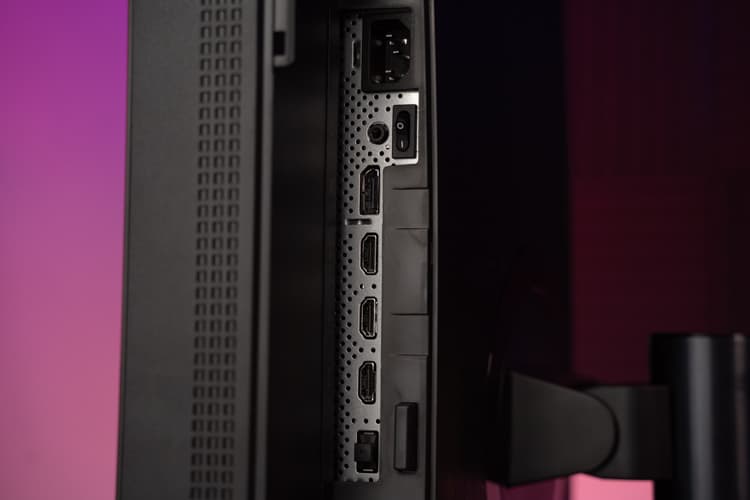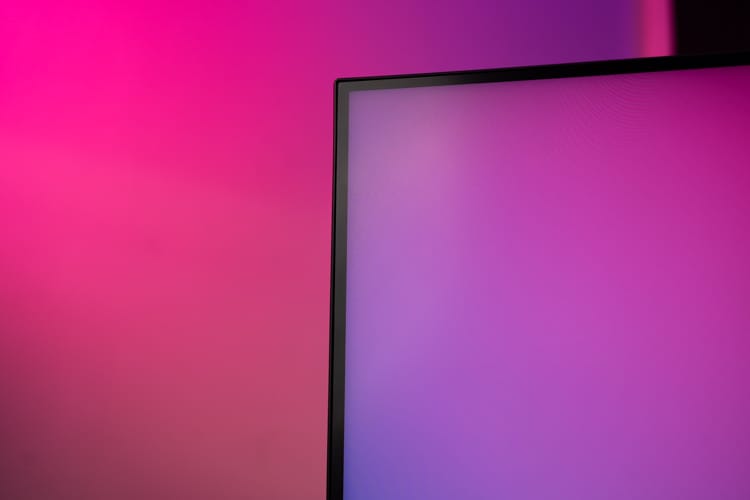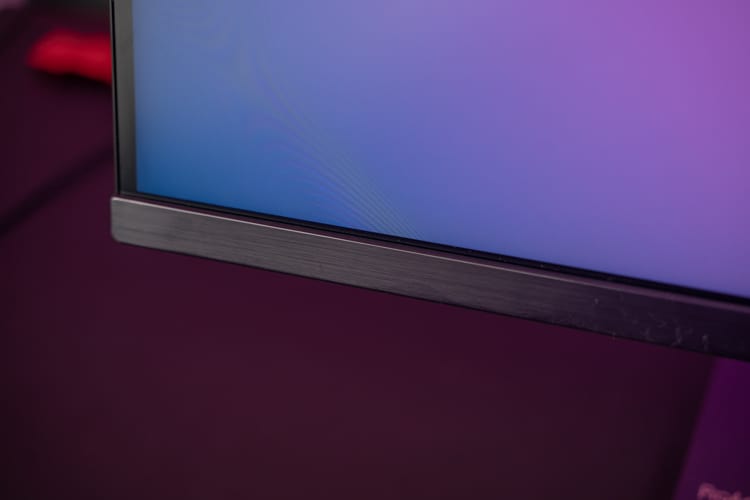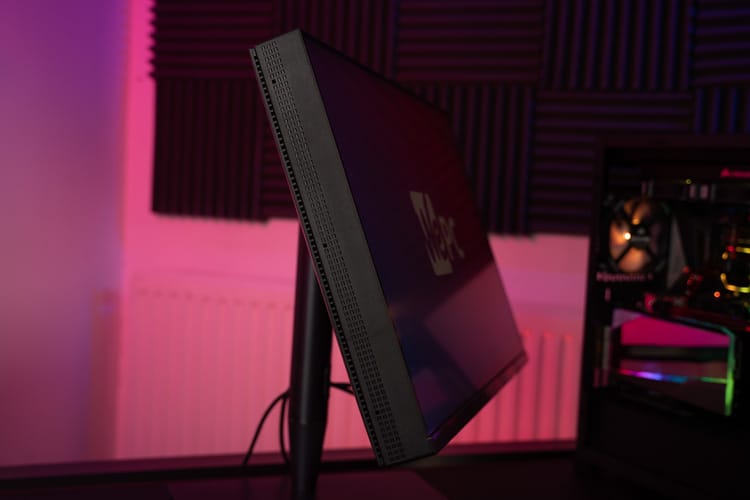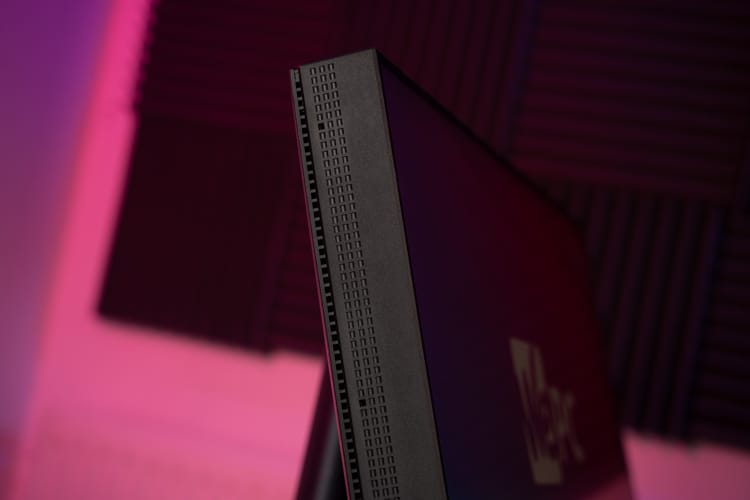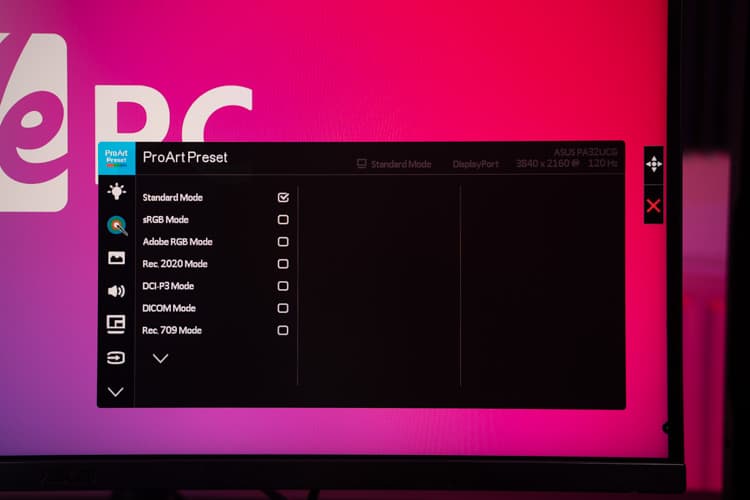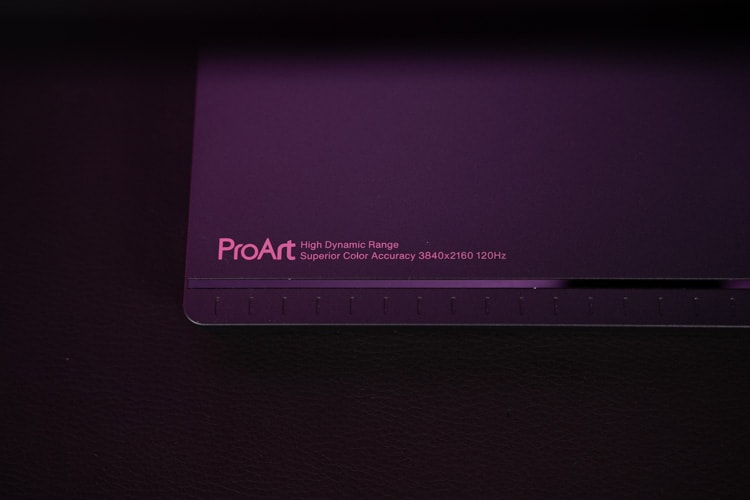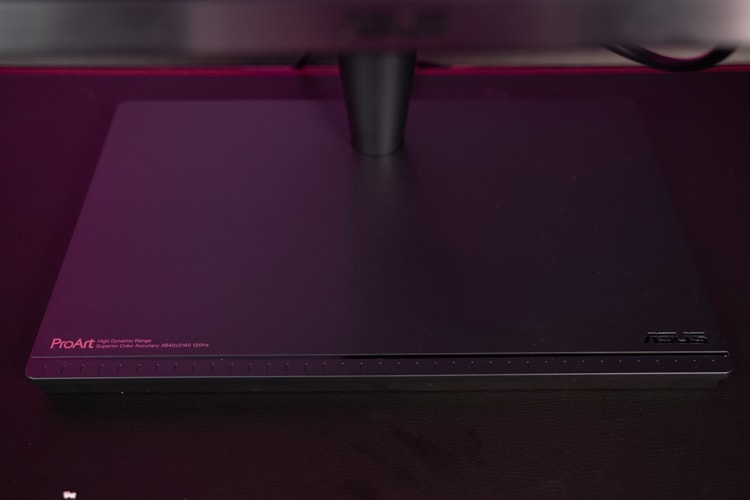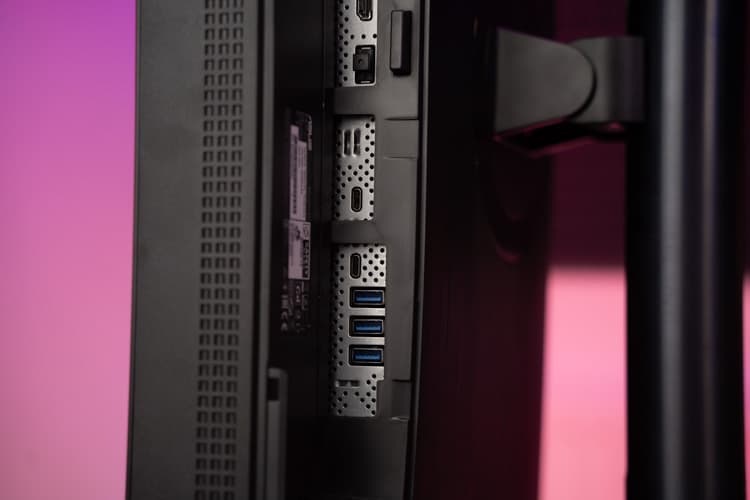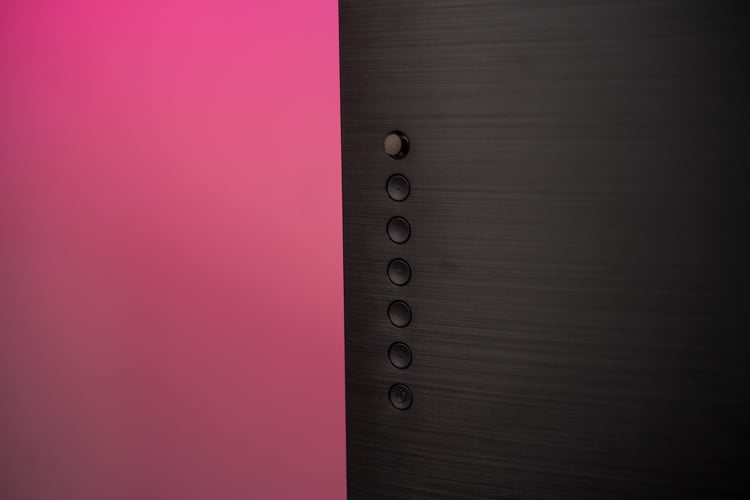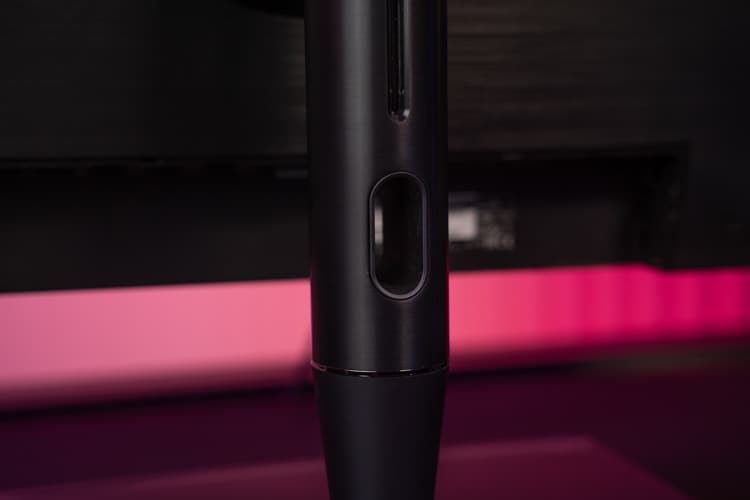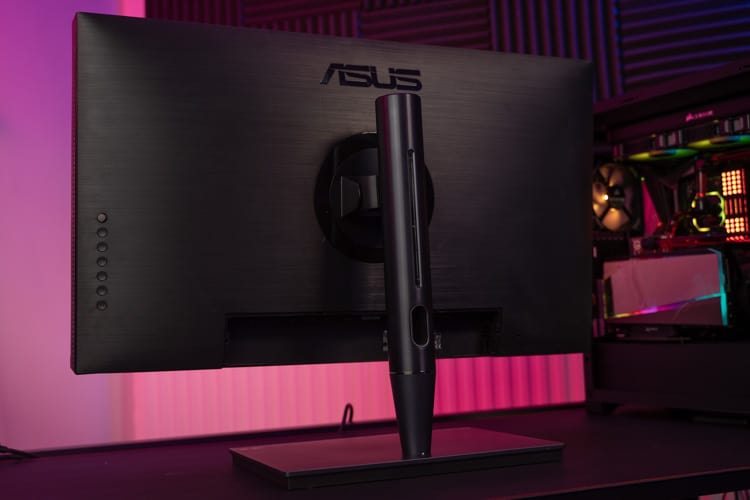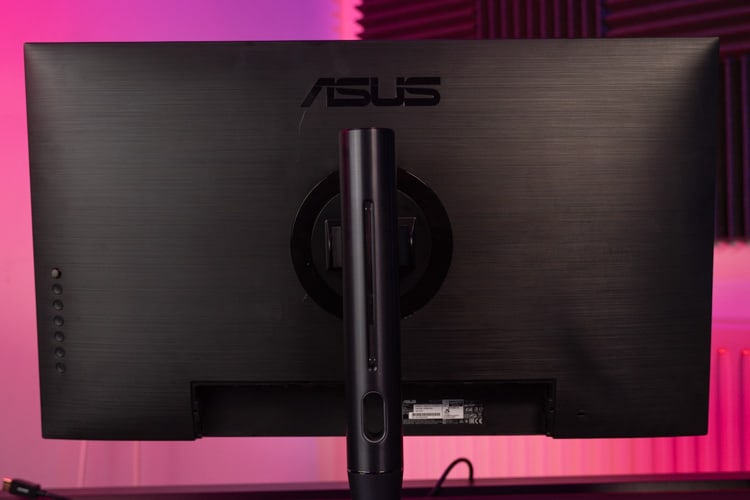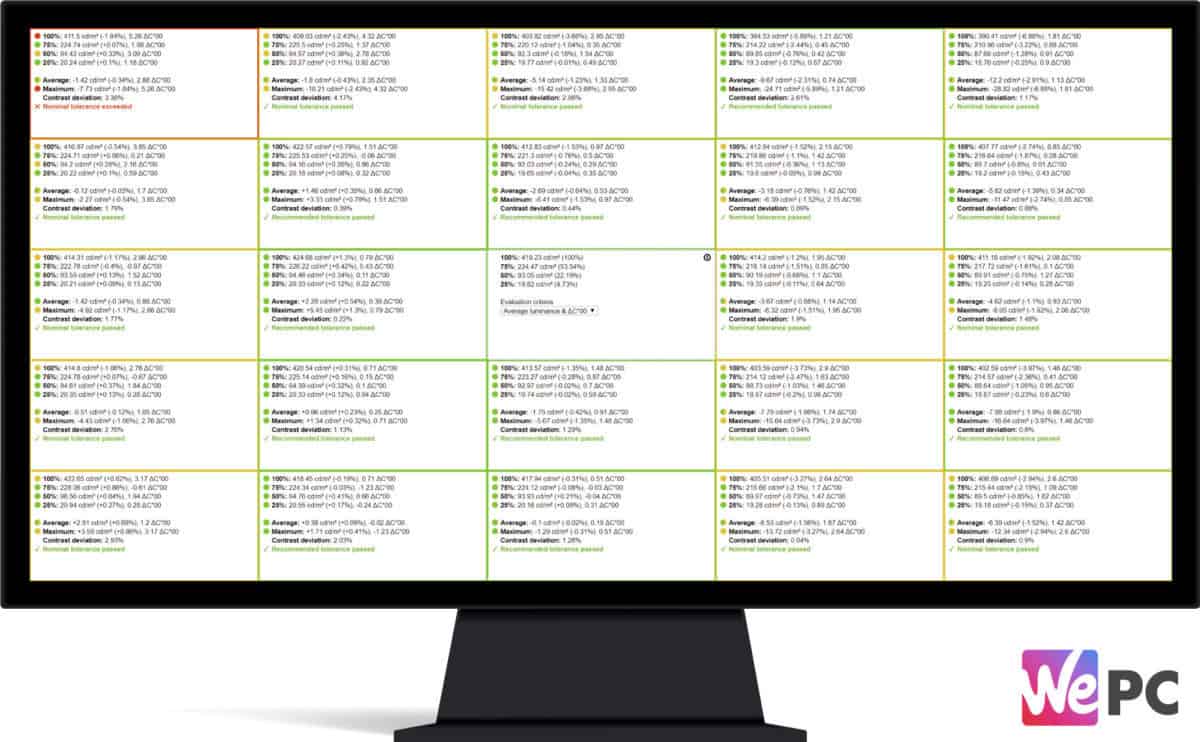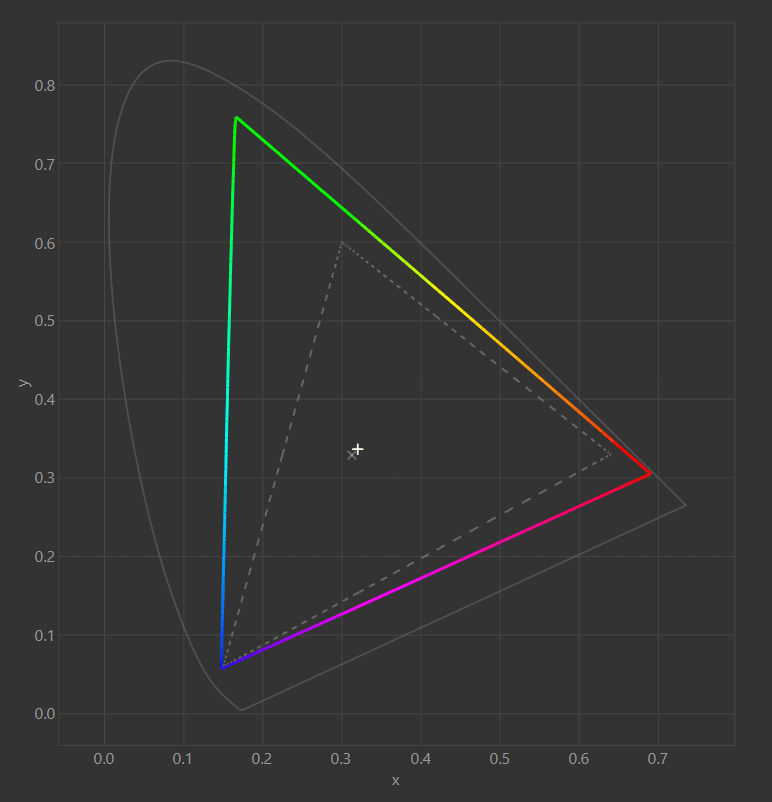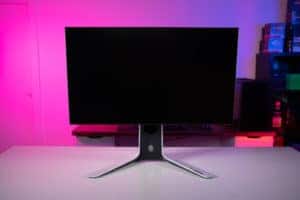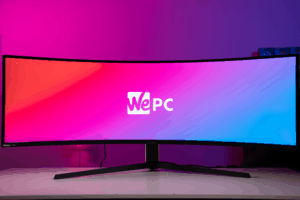ASUS ProArt PA32UCG Monitor Review
A stunning 4K monitor that offers great color accuracy right out of the box - no calibration required.
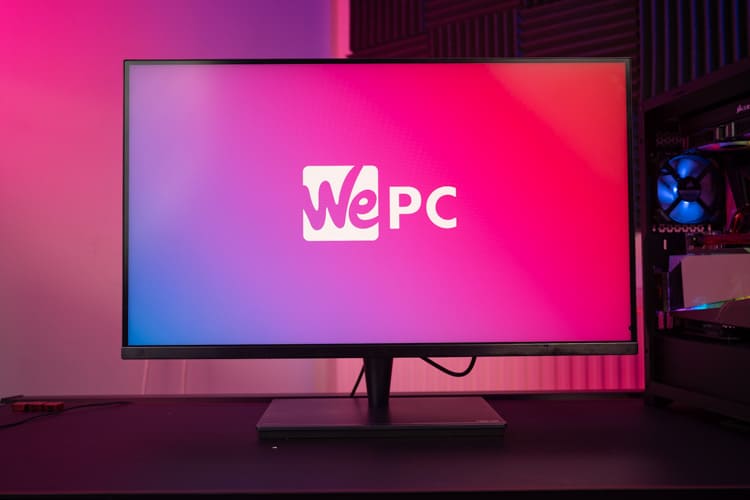
Over the past couple of years, we’ve seen a whole host of exciting content-creator monitors hit our shelves – all equipped with stunning displays that make use of wide color gamuts and versatile features. One of the latest monitors that fall nicely into that bracket is the ASUS ProArt PA32UCG, a 32″ 4K mini LED display that offers up a stunning 1600-nit IPS panel alongside an equally impressive 120Hz refresh rate.
The high-performance monitor from ASUS is the perfect balance of specs when it comes to content creation – offering up a fast refresh rate alongside stunning colors and picture quality. Thanks to the 120Hz refresh rate, game developers also have the option of creating and testing on the same monitor, a feature other monitors on this ilk don’t offer.
The impressive 1152 local dimming zones work seamlessly with the Vesa DisplayHDR 1400 certification to help produce a stunning HDR experience. Alongside this, users also have access to true 10-bit color, Quantum-dot technology, and a fully versatile stand – something that should never be overlooked.
In the following guide, we’ll be putting the ASUS ProArt PA32UCG through its paces to see how it stacks up in color accuracy, picture quality, general content creation, and productivity type workflows. We’ll also be utilizing that 120hz refresh rate in some light games to see if this monitor could be used for gaming as well.
So, with plenty to get through, let’s waste no further time and dive straight into it!


Specifications
What's In The Box
The ASUS ProArt comes in a fairly basic black box that showcases many of the monitor’s features and some marketing material on the exterior. The monitor is unassembled from the stand, sitting inside a firm styrofoam layer that provides excellent protection.
The monitor must be attached to the stand (or a 100 x 100 mm VESA mount) before use, with no tools required for construction. One thing I did realize about the monitor was just how heavy it was. It has a total weight of roughly 15KG which is more than 80% of monitors in today’s market.
Alongside the panel and the stand, users will find the following items:
- ASUS ProArt PA32UCG
- Color Pre-calibration report
- Colorimeter
- DisplayPort cable
- HDMI cable
- Monitor Hood
- Power cord
- Quick Release stand
- Quick start guide
- Thunderbolt 3 cable
- Warranty card


Design And Features
With specifications out the way, let’s take a more comprehensive look at the build quality, design, and mechanical features the ASUS ProArt PA32UCG comes equipped with.
Design
Taking a closer look at aesthetics, the ProArt PA32UCG really does look like a premium option. The exterior of the panel is incredibly sleek thanks to thin top and side bezels. The bottom bezel houses the ASUS logo alongside a premium (gunmetal grey) brushed aluminum finish. Having said that, the panel itself is most certainly on the large side, measuring in at nearly 100mm thick (at its widest point).
The base of the monitor is square by design and features the ProArt branding in the bottom right-hand corner. It showcases some of the monitor’s main features, alongside another ASUS logo and a glossy band that resembles a ruler. Unlike the bottom bezel, the base and the stand are finished in a dark royal blue coloring.
The stand is cylindrical in shape and offers decent functionality and rigidity to the panel. It also provides a small cable cutout for routing purposes. The rear of the panel doesn’t really offer anything in terms of design, apart from a brushed finish alongside more ASUS branding. The rear of the standard does have a little plastic window with an indicator to let you know exactly where it’s sitting.
Overall, you can’t really argue with the styling of the monitor – it ticks all the right boxes if you’re looking for a slick designer panel.
Build Quality
ASUS is always pretty reliable when it comes to build quality, and this one feels the same. As we mentioned earlier, this monitor weighs in at over 15 Kg – often a good sign when considering build quality. The panel is thick and the anti-glare coating has a 3H hardness for additional stability. The main panel is mostly plastic but there is a lot of metal utilized throughout the design which certainly adds to the premium feel of this panel.
The stand feels incredibly well made and requires a good amount of force just to get it moving. There is almost no wobble in the monitor when it is stationary on your desk – however, if you tap the monitor with your finger, it isn’t exactly rock solid.
Ultimately, I struggled to find a single area within this monitor’s construction that felt poorly made. That said, we did find that the buttons (the joystick especially) were on the flimsy side. They weren’t horrendous – but they weren’t as good as they could be.
Panel Coating
Like many modern displays, the ASUS ProArt PA32UCG offers up an anti-glare coating in a matte finish. The panel coating on this display does an incredibly good job of mitigating both natural and manmade light sources. However, direct sunlight and fingerprints can be problematic.
Bezels
The bezels of this monitor measure in at 9mm (top and sides) by 20mm at the bottom. Whilst that does sound on the large side, I wouldn’t be too put off – this monitor has an almost frameless design that looks incredibly attractive.
Stand
As for the stand, well, as we’ve already mentioned, it provides superb rigidity and stability to this monitor. In terms of functionality, this panel offers all the versatility you could want. It houses the potential to be utilized in any number of positions, holding solid when you’ve found your perfect viewing position.
Below are the full adjustments available with this particular panel:
- Forward Tilt – 5 degrees
- Backward Tilt – 25 degrees
- Left Swivel – 60 degrees
- Right Swivel – 60 degrees
- Left Pivot – 90 degrees
- Right Pivot – 90 degrees
- Height – 140mm


Inputs
All the inputs can be found at the rear of the monitor and require inserting in a vertical fashion. The ASUS ProArt PA32UCG comes equipped with plenty of versatility when it comes to inputs, allowing for 3 x USB 3.1, 2 x HDMI 2.0, 1 x HDMI 2.1, 1 x DisplayPort 1.4, 1 x Thunderbolt 3.0 (in), 1 x Thunderbolt 3.0 (Out), and 1 x 3.5mm audio jack.
OSD
The OSD (on-screen display) is fairly similar to what we’ve seen in the past, offering all the adjustments you could want from a design-tailored panel.
Color presets are in abundance, with a bunch of ‘pre-calibrated to <1 deltaE’ options to choose from. Below are the main ProArt presets:
- ProArt Preset : Standard
- ProArt Preset : sRGB
- ProArt Preset : Adobe RGB
- ProArt Preset : DCI-P3
- ProArt Preset : Rec. 2020
- ProArt Preset : DICOM
- ProArt Preset : Rec. 709
- ProArt Preset : H DR_PQ DCI
- ProArt Preset : HDR_PQ Rec2020
- ProArt Preset : HDR_HLG
- ProArt Preset : HDR_HLG DCI
- ProArt Preset : Dolby Vision
- ProArt Preset : User mode1
- ProArt Preset : User mode2
Alongside ProArt color presets, users also have access to a whole host of other settings – including blue light mode, picture quality customization, color accuracy customization, system setup, and user profiles that can be set to your exact requirements.
Color Accuracy & Picture Quality
In the following section, we’ll be taking a closer look at the overall color accuracy of this panel. As this is a design-tailored monitor, this section will be particularly important leading up to our final verdict of this product. ASUS says that is has pre-calibrated modes for sRGB, Adobe RGB, and DCI-P3 right out of the box, with all showcasing a <1 average deltaE.
Let’s no forget, the ASUS ProArt PA32UCG does come with its very own colorimeter – meaning, if you do want to increase the accuracy of this monitor, you’ll be able to do so at no additional cost.
We’ll be testing some of the presets to see how accurate they are, alongside panel uniformity, max brightness, color gamut, and text clarity tests.
| Preset | White Point | Black Depth | Contrast Ratio | Average ΔE*00 | Gamma |
|---|---|---|---|---|---|
| IDEAL | 6500K | 0.00cd/m² | Infinite | 0.00 | 2.2 |
| Out The Box (Standard Mode) | 6586K | 0.095 cd/m² | 3314.6:1 | 5.51 | 2.14 |
| sRGB | 6610K | 0.0353 cd/m² | 2348.8:1 | 0.9 | 2.14 |
| DCI-P3 | 6581K | 0.0512 cd/m² | 3021.7:1 | 5.93 | 2.14 |
| Adobe RGB | 6576K | 0.05 cd/m² | 3093.1:1 | 0.62 | 2.14 |
Before testing any of the pre-calibrated ProArt presets, we ran a quick test right out of the box. We do this with all panels to see how accurate the factory profile is. I could see straight away that the ‘Standard’ preset was on the vibrant side, so accuracy probably wouldn’t be great. As you can see from the chart above, white point was very good as was black depth (0.095 cd/m2). Contrast ratio was well above the recommended 1000:1 and gamma was set to 2.14. The average detalE was the most disappointing value we measured, coming in at 5.51 and being deemed unfit for color-accurate work.
We moved on to the ProArt presets, starting with sRGB. This preset was incredibly accurate right out of the box, showcasing a good 0.9 average deltaE. Gamma was set to 2.14 and white point was very good at 6610K. Black depth reduced substantially in this preset as did contrast ratio. Having said that, it was still well above marketed values.
DCI-P3 was next, with results not being nearly as accurate as the sRGB preset. Whilst white point and black depth were both good, averaged deltaE was the worst recorded – showcasing a 5.93 average. Gamma, like all the other presets, was set to 2.14 and contrast ratio was again, well above the 1000:1 marketed value.
Lastly, we tested the Adobe RGB preset. Again, white point was perfect as was black depth (0.05). Contrast ratio was over 3000:1 and average deltaE was the best recorded, showcasing a 0.62 score which is incredibly accurate. Again, gamma was set to 2.14.
| Preset | White Point | Black Depth | Contrast Ratio | Average ΔE*00 | Maximum ΔE*00 | Gamma |
|---|---|---|---|---|---|---|
| IDEAL | 6500K | 0.00cd/m² | Infinite | 0.00 | 0.00 | 2.2 |
| Calibrated Profile | 6109K | 0.0808 cd/m²" | 3811.5:1 | 0.31 | 1.99 | 2.18 |
We wasted no time and calibrated the monitor in ‘Standard’ mode to see how accurate we could get the monitor to be. We altered the RGB settings to 54/47/49 and reduced the brightness to 20 for best results.
As you can see from the table above, the calibrated profile offered good colour accuracy that did out-perform the factory-calibrated settings. We recorded a white point of 6100K alongside a 0.08 black depth – not unusual for IPS calibration. Contrat ratio almost hit 4000:1 and average deltaE dropped to an impressive 0.31 – with a max of 1.99. Gamma was now reading 2.18.
Panel Uniformity
Panel uniformity is a test we run to check how uniform the luminance and colors are across the entirety of the screen. During this test, the center square is used as the reference space. Every other square is then tested to see how far it differentiates from the reference.
In an ideal world, we want every square to be green, meaning it hasn’t broken the differential threshold – something we can set at the start of the test.
Note: results will differ from panel to panel.
Overall, the panel uniformity for this display was very hit and miss. As you can see from the graph above, whilst only 1 quadrant recorded a ‘red’ score, large portions of it came back as amber – only just passing what is considered the nominal tolerance levels.
So, whilst this display wasn’t the best we’ve ever tested, it was by no means the worst either.
Viewing Angles
As expected from an IPS panel, the ASUS ProArt PA32UCG offered very good viewing angles – 178/178. The large screen meant that you could easily view this from wide angles and still get a perfectly good view of the panel.
Having said that, with excellent stand versatility, I can really envisage a scenario where you might need these viewing angles.


Color Gamut
As part of the calibration process, the DisplayCal will give an accurate measurement of the color gamut the monitor can provide. Below are the results of the color gamut test:
As far as color gamuts go, the ASUS ProArt PA32UCG offered one of the widest we’ve ever tested. It easily covered 100% sRGB and 100% Adobe RGB – providing a gamut volume of 187.4% and 129.1% respectively.
Whilst the monitor did showcase a large gamut within the DCI-P3 spectrum (132.7% volume), it was still the least in terms of percentage coverage – only offering 94.7%.
Maximum And Minimum Brightness
We ended the color accuracy and picture quality testing by checking the maximum brightness, minimum brightness, and 120 candelas level on this panel. The results are below:
| Brightness | Candelas |
|---|---|
| 100% Brightness | 434.21 cd/m² |
| 0% Brightness | 9.4 cd/m² |
| 19 Brightness | 120 cd/m² |
Final Thoughts
So, there you have it, our comprehensive rundown of the ASUS ProArt PA32UCG monitor, a high-end 4K IPS panel that is tailored towards content-creators and game developers. I was extremely happy with the experience this monitor provided, offering up stunning picture quality and colors that were head and shoulders above lesser alternatives. . The 120Hz refresh rate plays a major role in how good this monitor is. Whilst it isn’t nearly as responsive as other gaming panels, when compared to a regular content-creator monitor, this thing is rapid. As we said in the intro, it allows game developers to create and test all on the same panel.
The 32-inch screen size works for both content creation and gaming, providing levels of realism and accuracy that really do add to the immersive value. Having said that, a lot of that realism comes from the 4K screen resolution and fantastic color accuracy this monitor provides. With 100% sRGB, 100% Adobe RGB, and 94% DCI-P3 color coverage, this monitor is great for all types of content creation. It offers a bunch of unique features – including Mini LED backlight, 1152 local dimming zones, and VESA DisplayHDR 1400 certification – a tonne of ProArt color presets, and fantastic stand versatility. All in all, it’s hard to knock this monitor – until we get to the price.
Whilst this monitor does tick all the right boxes, it comes with a price tag that most certainly leans towards the eye-watering. There are a number of high-performance content-creator panels out there that feature similar levels of accuracy and color gamut coverage – all of which retail for less than the price of the ASUS.
That being said, the ASUS does bring a certain level of quality to the table that isn’t always found elsewhere. So, if you’re an ASUS fan with the cash, this monitor will surely treat you well for years to come.


WePC is reader-supported. When you buy through links on our site, we may earn an affiliate commission. Prices subject to change. Learn more

